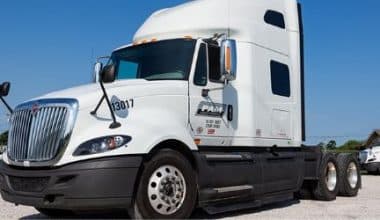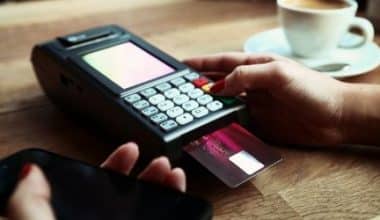Square gives small businesses almost everything they need to run day-to-day business and sell goods and services anywhere. Square offers a full set of tools for selling in stores, online, and on the go, as well as software for running a business. It also processes payments both offline and online. To use all of Square’s features, there are no startup or ongoing costs. Most people who use Square only have to pay the flat-rate processing fees, which are easy to understand. Hence, in this post, you will get to learn more about the stock, payment method, and how to work with Square.
What Is Square?
A mobile payment company called Square provides a variety of small business services, point-of-sale (POS) systems, business software, and payment hardware items. Unlike most payment processors, Square has the most complete free POS system on the market, and businesses of all sizes can use it. More than 2 million active merchants are using this payment and POS app, which has been downloaded more than 33 million times.
Why Small Companies Appreciate Square’s Services?
The first mobile payment processing app and card reader is called Square. When it originally came out, it was widely adopted since it freed companies from the need to utilize cash or peer-to-peer payment apps and allowed them to accept card payments everywhere. Also, it eliminated the intricate contracts and lengthy commitments demanded by many merchant services.
Unlike the majority of organizations that take credit cards, Square does not demand an application or approval procedure and does not charge a monthly fee or have any minimum requirements. Payments, POS software, and online ordering are the three key features included with every free Square account.
Free and Affordable POS Software
In addition to providing outstanding merchant services, Square also provides free point-of-sale (POS) applications that can be installed on iOS and Android smartphones and tablets or used in conjunction with one of Square’s exclusive hardware solutions. The no-cost, user-friendly app is appropriate for both mobile and in-store sales because it offers an offline mode.
Square provides both free and premium POS software services for retail, restaurant, and appointment-based businesses in addition to the regular free Square POS app. Payment processing, inventory management, basic employee administration, customer relationship management (CRM), reporting, analytics, and industry-specific features are all included in any POS software system.
Free Online Ordering Website Builder
The third complimentary service that comes with every Square account is Square Online. It is an easy-to-use site builder that can be used to make a business website, a simple e-commerce site, or to provide your company the ability to accept online orders or place orders in advance. Square Online can also be used to make online appointments.
It has many templates for different business types, such as restaurants, retail stores, events, and appointment scheduling. It syncs orders, inventory, and customers with your POS for curbside pickup, shipping, and local delivery.
Square Banking
With Square Banking, the organization has advanced to the next natural level in its commercial offerings. These services are offered by Square’s banking affiliate, Square Financial Services, Inc. or Sutton Bank, despite the fact that Square, Inc. is a financial services provider rather than a bank.
Together with the aforementioned small company loans, it also provides business checking and savings accounts. You may have more immediate access to your money if your Square sales revenue is deposited straight into the accounts.
For businesses that use Square, using Square banking makes sense because there are no overdraft fees, minimum balance requirements, initial deposits, or account fees. The savings account has an APY of 0.5%. Square offers debit cards, just like other banks. It enables automatic payments, including the settlement of Square Capital business loans.
What Is Square Stock?
A two-sided digital payments ecosystem with products made for both merchant sellers and consumer buyers is what Square Stock intends to create in its core business. People may manage their finances, buy stocks and cryptocurrencies, and more with the help of the Square Cash app. The prognosis for SQ stock depends heavily on the monetization and growth of Cash App users. During the coronavirus pandemic and amid government economic support, Cash App growth surged. The pessimistic perspective is that once the American economy returns to normal, Cash App growth will slow.
They reported that the Cash App currently has 47 million monthly active users, up significantly from 44 million at the end of 2021, during the Goldman Sachs conference in September. It is anticipated that younger demographics will continue to be the key driver of Cash App user growth. For businesses that use its POS software and services, the corporation keeps the Square name.
In May, CEO Jack Dorsey said Block’s business model was “an ecosystem among ecosystems.” According to him, the plan is intended to foster a constructive feedback loop across business units as the company grows. But, they did not offer multi-year sales and profit predictions. The dual-class structure of Square stock, which offers insiders extra voting power, is another important consideration.
Square Stock: Move Into ‘Buy Now, Pay Later’
On January 31, 2022, Square completed the acquisition of consumer loan company Afterpay in Australia. Its expansion has paused. Moreover, “buy now, pay later” (BNPL) fintech firms like Afterpay are subject to more regulation. The Afterpay agreement, which was announced on August 1, had a $29 billion initial market value. The deal’s closing value was less than $15 billion because of the significant decline in Block shares.
In the growing “buy now, pay later” business that is encroaching on credit card networks, Afterpay is a competitor. Apple (AAPL) is now a competitor of Afterpay. Affirm Holdings is another competitor of Afterpay (AFRM). Some investors wondered if Block needed to buy a company in this industry rather than grow or partner. The market for “buy now, pay later” products is becoming more competitive.
Afterpay operations expenses are anticipated to cost $1 billion in Block’s 2022 guidance. Due to rising interest rates and potential regulation, UBS analyst Rayna Kumar found that Afterpay’s “risk profile” has shifted.
During the 2020 coronavirus outbreak, Square’s stock price rose as investors focused on Cash App expansion. Square stock exposure to restaurants and small businesses that might close due to the coronavirus epidemic was disregarded.
How Does Square Work?
Any business, artist, seller, or pretty much anyone may accept credit card payments from their smartphone or tablet using Square’s mobile technology. The answer to another question, “How do you work?” has a significant impact on the more thorough response to “How does Square work?” The fact that it is a fairly customizable system is only one of the reasons it has proven so popular among companies of all sizes.
Here are just a few examples of how it might work:
#1. For a Vendor with a Square Reader for Magstripe
Here is how Square functions for a sole proprietor, such as a farmer selling goods at a farmer’s market:
- The dealer registers with them and asks for a complimentary magstripe Reader.
- Their Point of Sale app is downloaded.
- The provider connects the tiny magnetic stripe reader to the headphone jack or Lightning connector on their smartphone or tablet.
- When customers make a purchase, vendors enter payment information or select well before goods.
- The card is swiped through the reader by the consumer.
- The customer signs the screen with their finger and chooses email, SMS, or no receipt.
- After one to two business days, or instantly for an additional 1 percent fee, the vendor’s bank account receives the money.
#2. For a Small Business with a Square Register
One method Square works for a physical establishment, such as a coffee shop, is as follows:
- The dealer purchases a Square Register, which is now $999 and registers with them.
- They alter the pre-installed Point of Sale app to suit their business requirements, such as adding a photo-based menu of the coffee shop’s drinks and other merchandise. If necessary, they can install attachments like a cash drawer, a receipt printer, or a barcode scanner.
- Vendors enter payment information or choose goods pre-programmed into the Point of Sale software when a customer wishes to make a transaction.
- The client then inserts a chip card, swipes a card with a magnetic stripe, or makes a contactless payment using an NFC reader. On the screen, they can sign and leave a tip.
- After one to two business days, or instantly for an additional 1 percent fee, the vendor’s bank account receives the money.
#3. For a Business Accepting Orders Online and Invoicing
Here is how this payment service can be used by a company that processes orders, such as a bakery, which can then invoice clients:
- The company owner registers with Square.
- With their Dashboard, they include items in their item library (optional).
- With their Dashboard, they build an invoice with the necessary goods and send it to the client or customer (optional).
- If a user chooses not to use their invoicing tool, they can also enter credit card data, user information, and amount details manually into their Virtual Terminal. As an alternative, you can also quickly and efficiently collect consumer information by using a Square payment and purchase form.
- The payment is processed by Square and deposited into the company’s account.
- After one to two business days, or instantly for an additional 1 percent fee, the vendor’s bank account receives the money.
What Is Square Payment?
The Square hardware and Point of Sale (POS) software are integrated with their payments processing service, an online payment processing service that enables businesses to accept different payment kinds. With interaction with other Square tools and outside programs, businesses may use Square Payments to sell through e-commerce platforms, accept payments from all major credit cards, generate invoices, save payment information for recurring customers, and more.
Square Payments offers solutions for managing chip cards, NFC payments, magstripe, remote payments, cash deposits, and more in order to make it easier to take any kind of payment. As a result, businesses can provide their customers with additional options. Users can combine Square’s card reader hardware and point-of-sale software to process payments anywhere and however, customers choose to pay. With Square technology, businesses may accept credit cards, NFC payments, gift cards, and other payment methods. Payments can even be handled remotely by keying them in even when offline.
To ensure that both businesses and their customers’ accounts and data are secure when making purchases, Square Payments offers automatic security features like PCI compliance, chargeback protection, account takeover protection, and fraud monitoring and detection.
Major Advantages of Employing Square Payments
- By integrating with their Invoices, you can send invoices from computers or mobile devices straight to clients’ email inboxes and give clients a button to pay online or in person using credit and debit card processing.
- Automated features like fraud monitoring, dispute management, chargeback protection, PCI compliance management, and others help to ensure that payments are completed accurately and securely.
- Use the Square App Marketplace to connect with other e-commerce sites to process payments, including BigCommerce, Weebly, Wix, WooCommerce, Ecwid, and others.
- With no card reader required, accept payments through chip credit cards, magstripe, NFC, through mobile devices, or remotely by manually entering payments from the Square dashboard. Also, to save time, businesses can keep cards on file for regular clients.
- Use the Square Payment Processing APIs to sell online using unique built-in payment solutions for apps or websites, and easily combine online and offline sales. Profit from Square’s capabilities, like reporting and deposit tracking, among others.
What is Square Used For?
Carpenters and machinists use it to locate holes, check the accuracy of right angles, and draw lines on materials before cutting them.
What is a Square Account?
Using their POS, customers may tip, pay, and sign on a retailer’s smartphone or tablet while also processing cash, credit cards, and gift cards.
What Does Square Mean in Business?
It is a full-featured software and hardware platform created to support the management and expansion of businesses of all types and sizes. It combines a strong point-of-sale platform with a variety of hardware and software to streamline services, making your job as a business owner easier.
How Does Square Make Money?
Square’s P2P Cash App service is the main source of its income. Customers can send money for free using the app’s basic version. For every qualified transaction, they charge a fixed fee of 2.75%. Customers are charged 1.5% for faster fund transfers, which is how they make money.
Is Square Free to Use?
There are no setup or monthly fees when using the point-of-sale software. Pay only when you receive money.
Which Bank Does Square Use?
Sutton Bank, a member of the FDIC, offers Square Checking. In accordance with a license from Mastercard, Sutton Bank, Member FDIC, issues the Square Debit Card. Everywhere Mastercard is accepted, the Square Debit Card can be used. The FDIC insures accounts up to $250,000 in value.
Which Banks Work with Square?
Which banks can I use for rapid transfers?
- JP Morgan Chase.
- Huntington National.
- Chase JP Morgan.
- TD Bank.
- PNC Bank.
- Regions.
- SunTrust.
- Bank of America.
- Citizens Bank.
Do I Need a Bank Account to Use Square?
To facilitate refunds or chargebacks, they need a transactional bank account (an account that supports both transfers and withdrawals).
Related Posts
- CASH APP LOGO: Meaning, Font, Card, and Taxes
- The 19+ Best POINT OF SALE SYSTEMS FOR SMALL BUSINESS in 2022 (Updated)
- 2022 Best PAYMENT SYSTEMS FOR SMALL BUSINESS (Detailed List)
- BEST POS SYSTEM FOR SMALL BUSINESS: The Best POS Systems for Small Businesses in 2023






